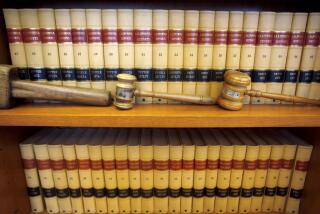An Angeleno on the Short List? : Vilma S. Martinez would be a strong candidate for U.S. Supreme Court
- Share via
The Great Mentioner is at it again. This time it’s about who shall be nominated by President Clinton to fill the seat of Supreme Court Justice Harry M. Blackmun, who will step down later this year.
Already the White House has dribbled out half a dozen plausible names. Whether any particular person on the list is a genuine candidate or merely for show isn’t clear. But at least one name said to be under consideration richly deserves the White House’s serious attention. She is Vilma S. Martinez, a prominent Los Angeles attorney and the only Californian yet mentioned.
Martinez is well known throughout the Southwest. The Mexican-American is from Texas but made her career in California. Martinez, a San Antonio native, graduated from Columbia University Law School and was a staff attorney at the NAACP Legal Defense and Education Fund early in her career. From 1973 to 1982 she served with distinction as president and general counsel for the L.A.-based Mexican-American Legal Defense and Educational Fund, an influential national organization.
Martinez has been on several corporate boards and is now a partner at the well-established Munger, Tolles & Olson law firm.
Reported to be on the Great Mentioner’s short list are Judge Richard S. Arnold of Little Rock, chief judge of the U.S. 8th Circuit Court of Appeals (though said to be perhaps too Arkansan and thus seemingly cronyish), Judge Stephen G. Breyer of the 1st Circuit in Boston (though said to be too white and male), Judge Amalya L. Kearse of New York (though she would be the second African American on a court with no Latinos), U.S. District Judge Jose A. Cabranes, chief judge of the District of Connecticut (though said to be perhaps not liberal enough) and Interior Secretary Bruce Babbitt (though said to be, as a former moderate Democratic governor, too much like Clinton).
All respectable candidates, to be sure. Like Martinez, who might be just what the Supreme Court, and history, needs.
More to Read
Get the L.A. Times Politics newsletter
Deeply reported insights into legislation, politics and policy from Sacramento, Washington and beyond. In your inbox twice per week.
You may occasionally receive promotional content from the Los Angeles Times.










